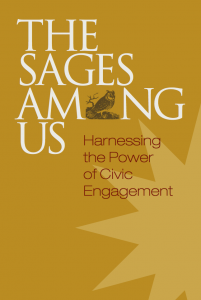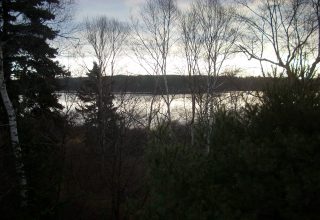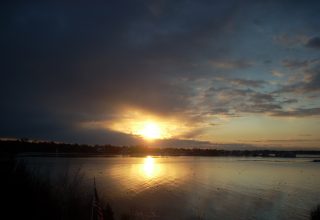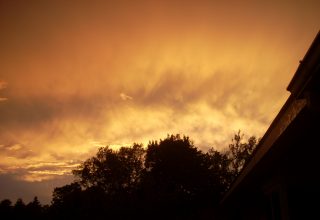

THE SAGES AMONG US: HARNESSING THE POWER OF CIVIC ENGAGEMENT
by Gary H. Quehl, William H. Bergquist, and Sage Associates
FOREWORD
Thousands of books and articles have been written about leadership, and there is a substantial body of literature on community development as well. But little has been said about a closely related subject: the civic engagement of sage leaders—the role that unusually talented men and women voluntarily play in sharing their experience, judgment, and wisdom to advance the welfare of the communities in which they live.
Furthermore, while “civic engagement” is now an understood and accepted concept (“working to promote the quality of community life”), the term “sage” usually is not associated with it. To some, “sage” is a herb with a camphor-like aroma. To most “sage” evokes images of oracles and shamans, wise old men and women who for thousands of years in tribal societies served as political leaders and judges, guardians of traditions, and teachers of the young. This age-old meaning of “sage” lingers, but the forces of modernization left traditional elders without meaningful roles and they lost their honored place in society. In our time, senior citizens have become stereotyped as “old people” and have been relegated to retirement communities and nursing homes, awaiting pending death. For all intents and purposes, they are no longer considered contributing members of society.
Enter stage left: Sage-ing, a new model of late-life development which zealously proposes that elderly men and women have the potential to “become spiritually radiant, physically vital, and socially responsible elders of the tribe.” (Zaltman and Miller, From Age-ing to Sage-ing). Viewed in this provocative and powerful way, sages are energetic risk-takers who work to heal and humanize society by becoming deeply involved in strengthening the civic lives of their communities.
The subject of sage-ing also has a corollary: It is not only senior citizens who have the potential to become sage leaders. Many young community members possess and exhibit the qualities of sage leadership as well—and deservedly so. The conventional notion of wisdom emanating only from the elder is being replaced by the compelling notion of reciprocity—the potent truth that each age cohort has something of great value to bring to the other cohort in serving their community together. Building on the idea that sage leadership is an intergenerational phenomenon, this book tells the story of the civic lives of 50 emerging sage leaders (ages 25-55) and 50 senior sage leaders (ages 56-90) in Grass Valley and Nevada City, California. These 100 certainly are not the only sage leaders in these two communities, but they are highly representative of those who are voluntarily engaged in its civic life.
The early chapters set the stage for sage leadership in “Twin Towns.” The book then shifts to the dynamics of sage leadership and civic engagement, followed by reflections on leadership from a “sagacious” perspective. The book concludes with musings about the continuing personal and professional growth of the Sage 100 and their views on religion, spirituality, and the meaning of wisdom.
Rich narratives from the 100 in-depth interviews provide significant insights into the nature of sage leadership and civic engagement. And lessons from these interviews make a compelling case for those unengaged “others” who possess sage qualities to step forward and offer their leadership on behalf of the community. It is hoped that you, the reader, will come away with a rich understanding about the extraordinary lives of these civically engaged sage leaders and their gift of intergenerational bestowal.
PROLOGUE
What do I get out of my civic involvement in our community? Millions of dollars of good feelings. I don’t think there’s anything more to it than that. Sage Leader
What is sage leadership? And what can be said about the civic involvement of sage leaders in advancing the welfare of communities in which they live—especially during difficult economic times? This book invites answers to these and other intriguing questions.
The Five Influences
Inspiration for The Sages Among Us arose from loose connections among five influences. The first and oldest is the classic 1929 and 1937 sociological studies of Muncie, Indiana, called Middletown, by Robert and Helen Lynd. Second is the intriguing story of two dynamic and historically-linked Northern California communities, Grass Valley and Nevada City. The third influence is the emergence of a powerful concept called community capital, the key to building fully sustainable communities. An essential part of community capital is a fifth influence, the cogent argument made by John Gardner in 1988 for the civic engagement of senior citizens. And the fifth influence is the relative absence of literature on sage citizen leadership. We begin by briefly looking at each influence.
Download Article
















